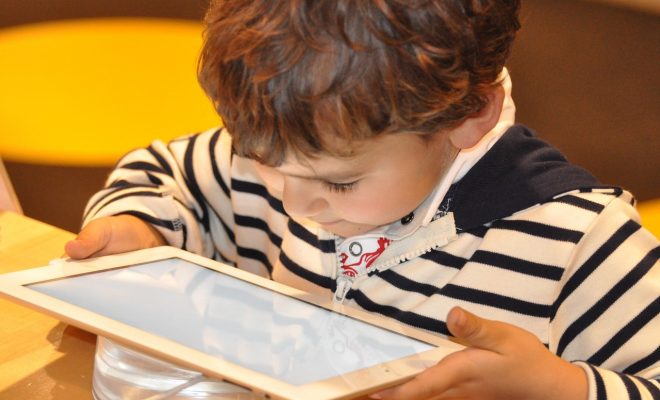Profile of a Tech Literate Graduate

When school administrators set out to construct a profile of their ideal graduate, many make the mistake of defining technological literacy and then struggle to choose the correct ed tech to get kids there.
Linking the parameters to your institution or council’s computer science (CS), ed tech, and STEAM efforts is one method to ease this process. Begin by infusing CS and STEAM into school projects that address digital equity and citizenship while teaching science, math, ELA, and other topics.
You can thoughtfully develop a profile of a digitally literate graduate by following the four steps outlined below.
- STEP 1: Locate and unpack a model.
Use your divisional or statewide graduate profile to kick-start the discourse within your institution. Many educational departments have created such profiles that educators can check.
First, decide what information and skills every graduate should have. In my commonwealth of Virginia (like in many others), we prioritize the following four:
- Content knowledge
- Workplace skills
- Community engagement and civic responsibility
- Career exploration
Because these categories are so wide, you should explain how they apply, especially to CS and STEAM instruction. You can begin by demonstrating a model of a student maker.
The Edutopia video below, for example, depicts the student who was well on his way to becoming a tech literate graduate. By watching the movie, educators may determine where they should focus their teaching and learn to fit with the four areas indicated above.
Next, unpack your model maker example and create a list of the information and abilities students should demonstrate. Programing, making circuits, and 3D manufacturing are the top talents that students need in both CS and STEAM. There are others, of course, such as technology, reading, math, internationalization, peer collaboration, and assisting others. These abilities are now used to represent or unpack the bullet for your grad profile.
STEP 2: Tag team with colleagues to plan instruction
In step one, we designed our graduate profile by brainstorming and recognizing both the personal and professional knowledge and skills that our graduates need. Now it’s time to formulate plans to bring the profile to fruition. To ensure student success, an implementation should take place in the classroom and tap the expertise of our colleagues.
Student achievement is seldom the result of a single teacher but a team effort. The same could be stated of a technically inclined graduate’s accomplishment. While our classrooms are often compartmentalized in schools, our pupils are not.
Every two days, they see every teacher in their grade level. As a result, connecting our classrooms through organizing project-based education (PBL) unit jointly makes sense.
Making effective cross-curricular linkages by a member’s ability is often difficult, particularly when the learning objectives of student technological products are not necessarily tangible. That is why I advise you to have kids use tech to enhance the learning experience and bring in functional prototypes or samples of whatever you want them to develop in their class (CS, STEM, art, math, etc.). This clarifies the situation for the other partners and establishes a meaningful framework for structuring the educational opportunities, whereby each team member can subsequently support the class.
The Physiology of a Project: Kinetic Quandary video below by Kings Middle School in Augusta, Maine, is an excellent illustration of this. The technology teacher developed a model of a kinetic artwork and brought it to a faculty planning session in this eighth-grade pass project, including art, history, engineering, language arts, and technology teachers. Seeing the model’s properties and knowing why it is kinetic gave his colleagues the context they needed to start planning their portion of the project. To promote each student’s interdisciplinary learning, each instructor in the video had the students create products related to the subject of the course (Google Maps, letters to Portland politicians, public presentations, etc.).
Although step one is mainly focused on creating a profile of a technologically literate student for both CS and STEAM students, steps three and four employ explanations and examples that apply to other curriculum areas as well. The approaches outlined, however, can be used in both CS and STEAM programs.
STEP 3: Find and work with the relevant industry partners.
Because technical literacy necessitates students creating authentic goods with suitable tech, building technically literate grads should not be left solely to teachers and schools.
Soliciting the assistance of our business and trade partners is so important to this process that educator Sarah Field recommends including partner companies during the program ideation process in her article leveraging the power of business and community partners in PBL (step two).
Seek out community members who use the knowledge and skills you’re teaching — and then welcome them into your classroom — to discover and leverage industry partners. Assume you’re teaching students how and where to build a tiny house and want to incorporate real-world math. In the setting of blueprints, layouts, and elevations, bringing a building inspector into your class is a certain method to do so.
Expert knowledge will assist you in structuring your initiatives around real-world events (even if they are fake) and providing greater alignment with student profiles. Also, keep in mind industry experts may not necessarily need to be present physically in classrooms to assist students in achieving the graduate profile’s aims and results.
The 5th Medical Interns project, which can be found on the NapaLearns YouTube channel, demonstrates how simple it is to bring professionals into the classroom remotely using Skype, Hangouts, and even FaceTime to kick off an inquiry in a PBL unit. Assuming the role of medical students, the students were introduced to a real doctor through Skye, who guided their research into the human body systems and taught them about the various causes of diseases while they developed care plans for adults playing sick patients. Students used technology to do research and deliver their results to their audiences.
Allowing industry and local partners to engage students while they work on their initiatives and present their findings at the end is also a good practice.
Step 4: Establish career paths in schools.
Consider the students we would generate if we allowed them to dive into academic subjects while also building their tech literacy through authentic transdisciplinary projects through their K-12 experience. This is possible when schools construct systematic K-12 career paths — or pipelines — for their kids and allow teachers enough time and space to prepare and collaborate to enhance learning linked to well-developed graduation profiles.
Many schools and school systems, such as Lawrenceville County School District in Georgia, have worked hard to provide meaningful and model career pathways for pupils. Gwinnett County’s campus pathway map for computer science (CS), engineering, and other professional and technical (CTE) options are available to both those that are certain and those who are confused about which road would better suit their high school kids.
Career-focused academies are becoming more common in American high schools. The Academies of Nashville and the Academies of Loudon are two excellent examples of educational institutions that offer excellent career paths to students and use PBL as their primary instructional approach.
Change is required.
So, keep in mind that the process of building and implementing student profiles is constantly growing, so be flexible to different that will always necessitate educators updating our skill sets. A remark by the teacher and author Stephen Covey comes immediately to mind in this regard: “Your most essential job is always ahead in you, never behind you.” When defining and planning what we need to know or do to prepare future graduates, start with the end in mind.






